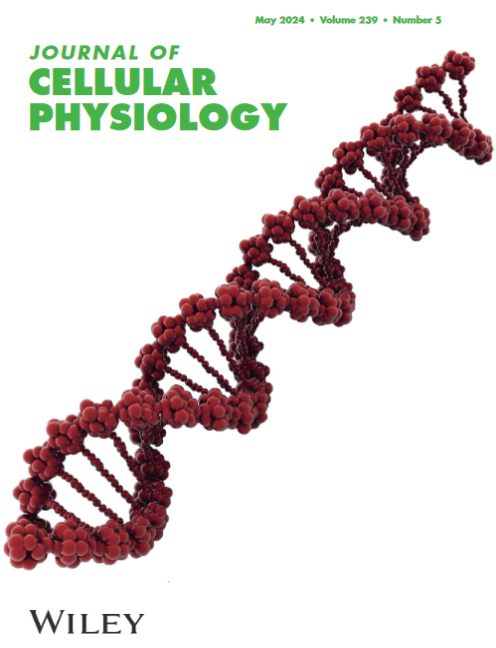牛磺酸通过激活 PPARγ-mTORC2 信号和抑制肝脏自噬改善低水平无机砷诱导的胰岛素抵抗》勘误表
IF 4
2区 生物学
Q2 CELL BIOLOGY
引用次数: 0
摘要
高宁,姚晓明,姜磊等。2019。牛磺酸通过激活PPARγ-mTORC2信号和抑制肝自噬改善低水平无机砷诱导的胰岛素抵抗。细胞生理学杂志,第234期。4: 5143 - 5152。https://doi.org/10.1002/jcp.27318An图1i中1mg /L iAs3+组的PAS染色图在编制过程中不慎使用。更正后的数字如下所示。我们为这个错误道歉。本文章由计算机程序翻译,如有差异,请以英文原文为准。

Erratum to “Taurine Improves Low-Level Inorganic Arsenic-Induced Insulin Resistance by Activating PPARγ-mTORC2 Signalling and Inhibiting Hepatic Autophagy”
Gao, N., Yao, X., Jiang, L., et al. 2019. “Taurine Improves Low-Level Inorganic Arsenic-Induced Insulin Resistance by Activating PPARγ-mTORC2 Signalling and Inhibiting Hepatic Autophagy. Journal of Cellular Physiology 234, no. 4: 5143–5152. https://doi.org/10.1002/jcp.27318
An incorrect PAS staining image for the 1 mg/L iAs3+ group in Figure 1i was used inadvertently during compilation. The corrected figure is shown below.
We apologize for this error.
求助全文
通过发布文献求助,成功后即可免费获取论文全文。
去求助
来源期刊
CiteScore
14.70
自引率
0.00%
发文量
256
审稿时长
1 months
期刊介绍:
The Journal of Cellular Physiology publishes reports of high biological significance in areas of eukaryotic cell biology and physiology, focusing on those articles that adopt a molecular mechanistic approach to investigate cell structure and function. There is appreciation for the application of cellular, biochemical, molecular and in vivo genetic approaches, as well as the power of genomics, proteomics, bioinformatics and systems biology. In particular, the Journal encourages submission of high-interest papers investigating the genetic and epigenetic regulation of proliferation and phenotype as well as cell fate and lineage commitment by growth factors, cytokines and their cognate receptors and signal transduction pathways that influence the expression, integration and activities of these physiological mediators. Similarly, the Journal encourages submission of manuscripts exploring the regulation of growth and differentiation by cell adhesion molecules in addition to the interplay between these processes and those induced by growth factors and cytokines. Studies on the genes and processes that regulate cell cycle progression and phase transition in eukaryotic cells, and the mechanisms that determine whether cells enter quiescence, proliferate or undergo apoptosis are also welcomed. Submission of papers that address contributions of the extracellular matrix to cellular phenotypes and physiological control as well as regulatory mechanisms governing fertilization, embryogenesis, gametogenesis, cell fate, lineage commitment, differentiation, development and dynamic parameters of cell motility are encouraged. Finally, the investigation of stem cells and changes that differentiate cancer cells from normal cells including studies on the properties and functions of oncogenes and tumor suppressor genes will remain as one of the major interests of the Journal.

 求助内容:
求助内容: 应助结果提醒方式:
应助结果提醒方式:


